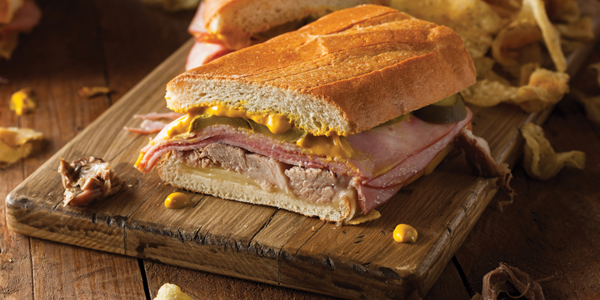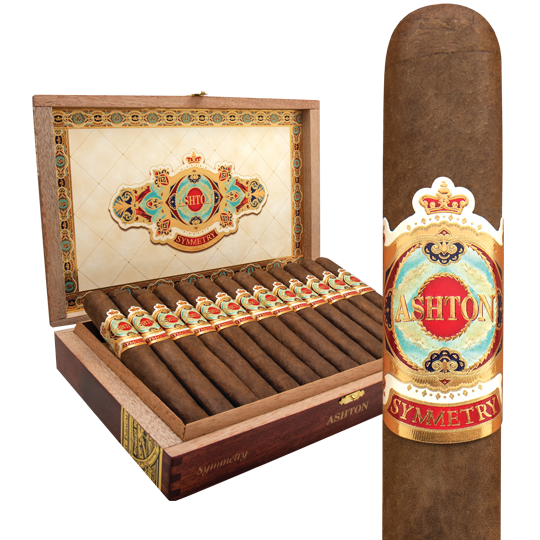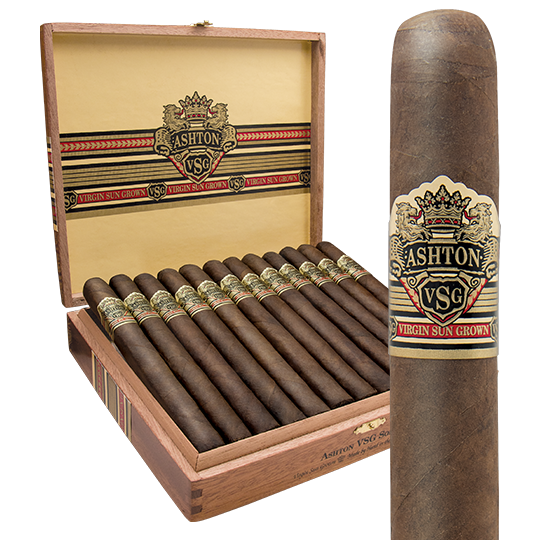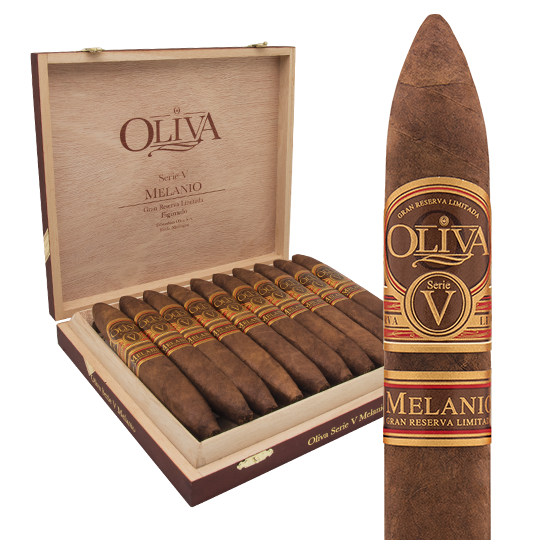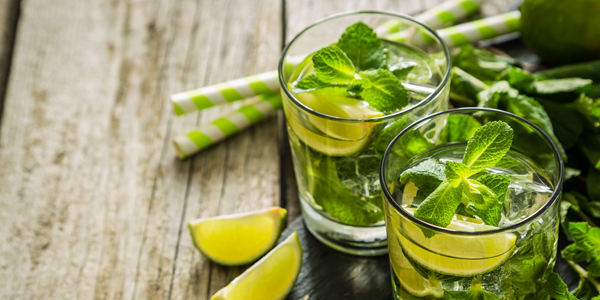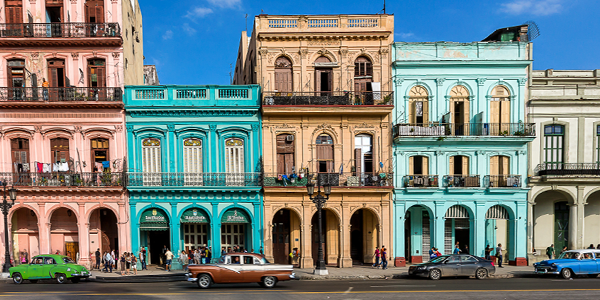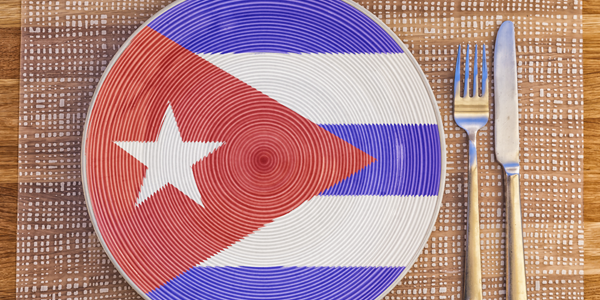Best Cigars & Cuban Food Pairings
For the sake of clarity, let’s define a couple of terms for this article. “Cuban food” is the cuisine that was born of the native, Spanish and creole influences on the island, at least up until the Castro revolution in 1959. The food in Cuba today is largely not that. With the exception of some restaurants in Havana that charge in US dollars and rural parts of the country where farmers and ranchers grow and cook their own, the food IN Cuba – much of which is genius born of scarcity – is not really the internationally recognized cuisine of Cuba. So, for our purposes, we’ll focus on pairing Cuban food with cigars of similar heritage, those that are born of Cuban spirit and soul, but not from Cuba.
The Perfect Finish: Dessert
I’m going to pair four main courses with cigars, but if you think that the food I choose is not right for a cigar, all you have to do to get on track is have a favorite Cuban dessert to reach pairing nirvana. Flan de caramelo, or caramel custard, is probably the most popular Cuban dessert. It’s basically eggs, milk of some kind, and sugar, some of it caramelized to a golden brown sauce that, cooked a little too much, gains a touch of bitterness. What’s not perfect about that with a cigar after? Or, less well known among non-Cubans is casco de guayaba. This is the shell of the guava fruit, already naturally uber-sweet that is candied in a sugar syrup. To cut the sweetness, it is properly served with a short slab of cream cheese in the dish. So, if your entrée doesn’t do it for you, have one of these two desserts and light up!
No matter what you’ve eaten as your entrée, my favorite cigar with these super-sweet desserts is one that is that has some nuance, but with enough power to stand up to the Cuban coffee I’m having to help tame the sugar. So, pick your favorite size, but I’m going with an Ashton Symmetry Prism, 5.625 x 46, about $12. This is a supremely well-blended Corona Gorda using Nicaraguan and Dominican tobaccos inside an Ecuador Habano wrapper. It’s really perfectly balanced, full-flavored, and ends very creamily.
Ooh Mommy: Oxtail Stew
Cuban entrées are generally not spicy, but they are packed with umami. Not to get too technical, but umami is commonly referred to as the fifth category of taste in food (in addition to salty, bitter, sweet and sour). Think of your favorite, really beefy dish. Then find someone who makes the Cuban version of oxtail stew, or rabo encendido. So, you don’t find too many oxen in the food chain, but cow’s tails are plentiful. Visit a Latino market. You’ll likely find it there if you want to make it yourself. The dish is a braise of the usual Cuban vegetables – onion, garlic, red pepper, green pepper – and some carrots, potatoes, tomato sauce, red wine and beef broth. The seasonings are fairly common as well. Cumin, bay leaves, salt and pepper. Thyme is a bit of an outlier that I like to use here, but it works. Like one teaspoon’s worth in a big pot. I throw a little parsley in there as well.
If you have a slow-cooker, this dish is made for it. I like to get it started on the stovetop, then finish it in the oven. It’s classically served over white rice with plantains – I go with the green ones, tostones, here so I can sop up more sauce.
The cigar that I immediately reach for after this is the Ashton VSG Spellbound, 7 x 54. It’s a big cigar to finish a big flavor meal. For about $15 you’ll get a dark, oily, luscious Ecuador Sumatra wrapper that holds a blend of full-flavored Dominican filler inside. This is an earthy cigar packed with cedar, spice and leather. Maybe you’d like a rum with that?
Shred It!
Perhaps the most popular dish among all lovers of Cuban food is ropa vieja. This literally translates into ‘old clothes,’ but it’s a delicious, savory concoction of shredded beef, tomatoes, garlic, onions and peppers ultimately cooked in a tomato base seasoned largely with cumin, a little bit of dry sherry and a touch of apple cider vinegar. At least that’s what you’re going to get from my kitchen. This too is a braise, but a much softer one that still packs tons of beefy flavor. The key choice here is which beef to use. Most recipes call for flank steak or even brisket. Sure, both are fine, but I make it with chuck eye roll. This is a cut just next to the short rib and has all the characteristics of its neighbor without the high cost. It’s considerably more tender than most other cuts used here. This dish has considerable complexity and a little bit of sweetness that allows for a wide range of cigar pairing options.
I like to go a little lighter here with an Oliva Serie V Melanio Figurado (6 x 52), again around $15, but supremely elegant in a jacket of Ecuador Habano keeping together the Nicaraguan tobaccos inside to deliver a medium to medium-full flavor. There’s notable caramel playing off notes of pepper and wood, but it’s creamy at the end. If you need a little more persuasion, this was Cigar Aficionado’s 2014 Cigar of the Year.
Go Whole Hog
There is no more iconic Cuban dish than lechon asado, or roast pork. That said, if you have the opportunity, you want to go to a party where the host is making the whole animal. That way, you’ll be able to experience how the different parts of the pig cook up and give you a different taste experience even though it’s all seasoned the same. I do this at least once a year and inject the pig with mojo criollo, a thin sauce that combines mostly citrus and garlic to flavor and tenderize the meat. The whole hog cooks up in just about four hours in a caja china, a sort of metal-lined box that acts as a Dutch oven that married a pressure cooker. The bonus: the skin gets super crispy and makes for a delicious chicharron, crackling.
There’s a lot of acid here, but there’s also sweetness from the orange and lemon in the sauce. Also, I serve platanos maduros, the overripe sweet plantains that take off any edge. I love an Arturo Fuente Don Carlos Robusto (5.25 x 50) here. The key to my choice here is the Cameroon wrapper that, cold, is just a touch sweet. Inside is medium-bodied Dominican tobacco with lots of complexity. There’s tons of cedar, oak, coffee and nuts in the flavor. But you already know that.
Between the Bread
The Cuban Sandwich has, in recent years, taken on a culinary status rarely associated with a sandwich. There are as many versions of this sandwich as there are places serving it, but for me the classic is roast pork, sweet ham, sharp Swiss cheese and pickles stuffed into Cuban bread slathered with some yellow mustard, then smashed by a plancha, a sandwich press. The cheese should melt and the bread gets toasty before the sandwich is sliced on a sharp diagonal. Get some plantain chips with it and you’re set.
If this is your meal, you’d do well to pick the Padron 6000 Natural, a Torpedo (5.5 x 52), for about $8.00. It’s medium-full and rich with an earthy foundation on which is built flavors of cedar, nuts, leather and cocoa.
A Final Thought
Cuban food is full of great options. I have listed my favorites inasmuch as they really complement cigars very well. Still, every choice of food and cigars is very personal. If you like chicken, try a Cuban fricassee. If fish is what you love, get an escabeche or a whole flash-fried snapper. Pick an appropriate cigar and live large.

